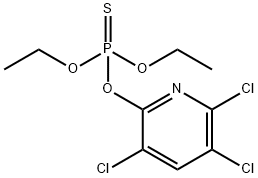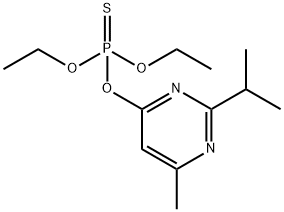PRODUCT Properties
| Melting point: | 42-44°C |
| Boiling point: | 200°C |
| Density | 1.398 |
| vapor pressure | 5.03 x 10-5 mmHg at 25 °C (subcooled liquid vapor pressure calculated from GC retention time data,Hinckley et al., 1990) |
| Flash point: | 2 °C |
| storage temp. | APPROX 4°C |
| solubility | (At 25 °): 6.5, 7.9, 6.3, and 0.45 kg/kg in acetone, benzene, chloroform, and methanol, respectively
(Worthing and Hance, 1991) |
| form | solid |
| pka | -5.28±0.10(Predicted) |
| color | White to off-white |
| Water Solubility | Insoluble. 0.00013 g/100 mL |
| Merck | 13,2208 |
| BRN | 1545756 |
| Henry's Law Constant | 8.19 at 5 °C, 20.7 at 15 °C, 22.7 at 20 °C, 35.5 at 25 °C, 146 at 35 °C:in 3% NaCl solution: 32.3
at 5 °C, 82.9 at 15 °C, 301 at 25 °C, 535 at 35 °C (gas stripping-GC, Cetin et al., 2006) |
| Exposure limits | OSHA PEL: TWA 0.2 mg/m3, STEL 0.6 mg/m3; ACGIH TLV: TWA
0.2 mg/m3, STEL 0.6 mg/m3 |
| Stability: | Stable. Incompatible with strong oxidizing agents. |
| InChIKey | SBPBAQFWLVIOKP-UHFFFAOYSA-N |
| LogP | 5.21 at 20℃ |
| CAS DataBase Reference | 2921-88-2(CAS DataBase Reference) |
| NIST Chemistry Reference | o,o-Diethyl-o-(3,5,6-trichloro-2-pyridyl)phosphorothioate(2921-88-2) |
| EPA Substance Registry System | Chlorpyrifos (2921-88-2) |
Description and Uses
Chlorpyrifos is a chlorinated organophosphorus (OP) ester
manufactured as an insecticide, acaricide, and miticide. Like the
other OP insecticides, the most prominent toxicity of chlorpyrifos
is associated with binding and inhibition of the enzyme
acetylcholinesterase (AChE) in insects and mammals. Chlorpyrifos
requires metabolic activation to chlorpyrifos oxon to
yield anticholinesterase activity.
First sold in 1965, chlorpyrifos is used globally to control
agricultural and structural pests and mosquitos. In the 1990s,
chlorpyrifos ranked as one of the top selling pesticides in the
world, for the most part, replacing the persistent organochlorine
insecticides. Over the last decade, concerns regarding
toxicity to the developing nervous system have limited its use.
By 2001, residential uses and uses in schools and parks were
prohibited, and many agricultural uses were restricted and the
US Residential use limitations were also imposed in Canada,
Australia, and the European Union (EU). It continues to be
used in large quantities to control crop damage worldwide. In the developing countries, excessive agricultural application
and lack of protective devices result in hundreds of thousands
of deaths yearly.
Chlorpyrifos belongs to a class of insecticides known as organophosphates. Technical chlorpyrifos is amber to white crystalline solid with a mild sulphur odour. Formulations of chlorpyrifos include emulsifiable concentrate, dust, granular wettable powder, microcapsule, pellet, and sprays. Chlorpyrifos is widely used as an active ingredient in many commercial insecticides such as Dursban and Lorsban to control household pests, mosquitoes, and pests in animal houses. The U.S. EPA classified chlorpyrifos as GUP.
Safety
| Symbol(GHS) |   GHS06,GHS09 |
| Signal word | Danger |
| Hazard statements | H301-H410 |
| Precautionary statements | P264-P270-P273-P301+P310-P391-P405 |
| Hazard Codes | T;N,N,T,Xn,F,Xi |
| Risk Statements | 25-50/53-36-20/21/22-11-38 |
| Safety Statements | 1/2-45-60-61-36/37-26-16 |
| RIDADR | UN 2783 |
| OEB | C |
| OEL | TWA: 0.2 mg/m3, STEL: 0.6 mg/m3 [skin] |
| WGK Germany | 3 |
| RTECS | TF6300000 |
| HazardClass | 6.1(b) |
| PackingGroup | III |
| HS Code | 29333990 |
| Hazardous Substances Data | 2921-88-2(Hazardous Substances Data) |
| Toxicity | LD50 orally in rats: 145 mg/kg (Schafer) |


